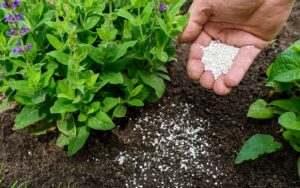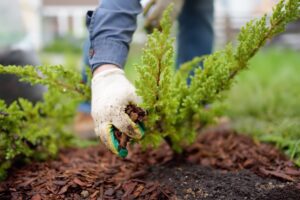5 Easy Methods to Eliminate Weeds from Driveway Cracks
Nothing ruins the appearance of your pristine driveway quite like weeds sprouting from every crack and crevice. Not only are these unwanted plants unsightly, but they can also cause further damage by widening existing cracks as they grow. Fortunately, you don’t need to be a professional landscaper to tackle this common problem. This comprehensive guide will walk you through five effective, easy-to-implement methods for eliminating weeds from driveway cracks, saving you time, money, and frustration.
Why Weeds Love Your Driveway Cracks
Before diving into removal techniques, it helps to understand why weeds are so persistent in these areas. Driveway cracks provide the perfect environment for weed growth:
- Small spaces collect seeds carried by wind, birds, or your shoes
- Cracks trap moisture, essential for germination
- Debris accumulates, creating a nutrient-rich medium
- Limited competition from other plants
- Protection from mowing and foot traffic
According to the United States Department of Agriculture (USDA), many common driveway weeds are classified as invasive species that have evolved to thrive in harsh conditions with minimal resources. Their resilience makes them challenging but not impossible to eliminate with the right approach. For more information on invasive plant species, you can visit the USDA’s National Invasive Species Information Center.
Method 1: Natural Weed Killers from Your Kitchen
Vinegar Solution: The Acetic Acid Approach
One of the most popular natural weed killers is something you likely already have in your pantry: white vinegar. The acetic acid in vinegar works by drawing moisture out of the plant, effectively desiccating it. For driveway weeds, a stronger concentration than your typical cooking vinegar delivers better results.
How to use vinegar as a weed killer:
- Purchase horticultural vinegar with 20-30% acetic acid or use regular household white vinegar (5% acetic acid)
- For household vinegar, use it at full strength; no dilution needed
- Add 1 tablespoon of dish soap per gallon to help the solution stick to weeds
- Pour the mixture into a spray bottle with a focused stream setting
- Apply directly to weeds on a dry, sunny day for maximum effectiveness
- Reapply after 2-3 days if necessary
While vinegar solutions work best on young weeds, they can be effective against established plants with repeated applications. The advantage of this method is its safety around pets and children once dried, though caution should be used during application as the higher concentration vinegar can cause skin irritation.
Salt Solution: The Dehydration Method
Salt is another kitchen staple that can be repurposed as an effective weed killer. Salt works by disrupting the water balance in plant cells and creating a hostile environment in the soil that prevents future growth.
How to use salt as a weed killer:
- Mix 3 parts water with 1 part table salt
- Add a small amount of dish soap to help the solution adhere to leaves
- Apply directly to weeds using a spray bottle or pour carefully into cracks
- For stubborn weeds, you can apply dry salt directly into the cracks followed by a small amount of water
The Environmental Protection Agency (EPA) notes that while salt is effective, it should be used cautiously as it can affect soil quality and potentially damage nearby desirable plants. For more information on environmentally friendly weed control methods, visit the EPA’s Integrated Pest Management principles page.

Method 2: Mechanical Removal Techniques
Manual Extraction: The Hands-On Approach
Sometimes the most straightforward approach is the most effective. Manual weed removal ensures complete extraction of the plant, including the roots, preventing regrowth.
Tools for manual weed removal:
- Weed knife or crack weeder (specially designed with a narrow blade)
- Wire brush for cleaning out cracks afterward
- Garden gloves to protect your hands
- Kneeling pad for comfort during longer sessions
For best results, water the area lightly before beginning to soften the soil and make root extraction easier. Work the specialized tool down along the root as deeply as possible, then pull the entire plant out. The key to successful manual removal is getting the entire root system; any fragments left behind can regenerate.
Pressure Washing: The Power Approach
For extensive weed problems across larger driveway areas, pressure washing offers an efficient solution. This method not only removes existing weeds but also cleans your driveway surface in the process.
Pressure washing tips:
- Use a pressure washer with at least 3000 PSI for concrete driveways
- Select a 25-degree nozzle tip for focused cleaning
- Work methodically from one end of the driveway to the other
- Hold the wand at a slight angle to direct debris away from clean areas
- Follow up with a crack filler to prevent future weed growth
While effective, pressure washing may not kill deeply established root systems. Consider combining this method with another approach for comprehensive control.

Method 3: Heat Treatments
Boiling Water: The Zero-Cost Solution
Perhaps the simplest and most environmentally friendly method is using boiling water. This technique delivers thermal shock to plants, destroying cell structure and killing both foliage and shallow roots.
Boiling water application:
- Bring a kettle or large pot of water to a full boil
- Carefully pour directly onto weeds in cracks, ensuring complete coverage
- For tough weeds, repeat the process for several consecutive days
- Use a funnel to direct water precisely into narrow cracks
This method works best on younger weeds and may require multiple applications for established perennials. The advantage is that it has absolutely no chemical residue and zero cost beyond your water and energy to heat it.
Flame Weeding: The High-Temperature Technique
For those comfortable working with controlled heat sources, flame weeding offers a chemical-free alternative that’s extremely effective against driveway weeds.
Flame weeding safety and technique:
- Purchase a specialized weed torch designed for this purpose
- Only use on non-flammable surfaces like concrete (never on asphalt or near dry vegetation)
- Have water or an extinguisher nearby as a safety precaution
- Hold the flame 4-6 inches above the weed for 3-5 seconds
- The goal is to wilt, not incinerate the plant
- Weeds will typically show results within hours
According to fire safety guidelines from the U.S. Fire Administration, always check local regulations and fire restrictions before using flame weeding techniques. Some areas prohibit open flames during dry seasons. For more information on outdoor fire safety, visit Ready.gov’s wildfire preparedness page.

Method 4: Commercial Weed Killers
Chemical Herbicides: The Targeted Approach
When natural methods aren’t providing sufficient control, commercial weed killers offer powerful solutions. These products come in various formulations designed for different situations.
Types of commercial herbicides:
| Herbicide Type | How It Works | Best For | Duration of Control | Environmental Impact |
|---|---|---|---|---|
| Glyphosate-based | Systemic absorption through foliage | Perennial weeds with deep roots | 1-3 weeks per application | Moderate; breaks down in soil |
| Diquat-based | Contact killer that destroys plant tissue | Annual weeds and grasses | Immediate results, no residual control | Low; minimal soil activity |
| Pre-emergent | Prevents seed germination | Preventing new weeds | 3-6 months | Low to moderate; creates chemical barrier |
| Acetic acid-based | Burns foliage on contact | Small annual weeds | Immediate results, no residual control | Low; similar to natural vinegar |
| Pelletized extended-release | Slow-release active ingredients | Season-long control | Up to 12 months | Moderate to high; persistent in soil |
When using chemical herbicides, always follow label instructions precisely. The EPA regulates these products and provides guidelines for their safe use. For targeted application in driveway cracks:
- Use a spray bottle with a precision nozzle or paint the herbicide directly with a small brush
- Apply when no rain is forecast for at least 24-48 hours
- Keep pets and children away from treated areas until completely dry
- Consider using a spray shield to protect nearby desirable plants
Organic Commercial Alternatives: The Safer Option
If you prefer commercial products but want to avoid synthetic chemicals, numerous organic alternatives have emerged in recent years. These products typically contain concentrated natural ingredients at strengths higher than homemade solutions.
Popular organic commercial weed killers:
- Vinegar-based products with 20-30% acetic acid
- Citric acid formulations that dehydrate plant tissue
- Fatty acid soaps that break down plant cellular walls
- Corn gluten meal as a natural pre-emergent
- Essential oil mixtures (clove, cinnamon, citrus) that burn plant foliage
The National Organic Program offers guidance on which commercial products meet organic standards. For information about organic approaches to weed management, visit the USDA’s National Organic Program website.

Method 5: Prevention Strategies
Sealing Cracks: The Long-Term Solution
While killing existing weeds is important, preventing their return yields lasting results. Properly sealing driveway cracks eliminates the habitat weeds need to establish.
Crack sealing options:
- Concrete crack filler for narrow cracks (under ¼ inch)
- Asphalt crack sealer for blacktop driveways
- Polyurethane or epoxy fillers for wider gaps
- Masonry caulk for brick or paver driveways
For best results:
- Thoroughly clean cracks with a wire brush and remove all debris
- Allow the area to dry completely
- Apply filler according to manufacturer instructions
- Consider a second application after the first has cured for complete coverage
Landscape Fabric and Gravel: The Barrier Method
For gravel driveways or areas along concrete driveway edges, landscape fabric provides an excellent weed barrier when installed correctly.
Landscape fabric installation:
- Remove all existing weeds completely
- Clean the area thoroughly of all organic material
- Lay professional-grade landscape fabric (avoid thin, inexpensive options)
- Secure with landscape pins or weighted material
- Cover with a layer of gravel or your preferred surface material
According to landscape design resources from the University of California Cooperative Extension, properly installed landscape fabric can provide 5-10 years of weed control when maintained properly. For more information on sustainable landscaping practices, you can visit the EPA’s GreenScapes program information.

Combining Methods for Maximum Effectiveness
The most successful approach to eliminating driveway weeds often involves combining methods. For example:
- Begin with manual removal of large weeds and pressure washing
- Apply a natural or commercial weed killer to remaining vegetation
- Once all weeds are dead, clean cracks thoroughly
- Seal cracks with appropriate filler
- Establish a regular maintenance schedule to catch new weeds early
Conclusion: Maintaining a Weed-Free Driveway
Eliminating weeds from driveway cracks is an achievable goal with the right combination of methods. Whether you prefer natural solutions, mechanical removal, or commercial products, consistency is key to long-term success. By understanding why weeds thrive in these spaces and taking proactive steps to make the environment inhospitable to them, you can enjoy a clean, weed-free driveway year-round.
Remember that prevention is easier than elimination, so once you’ve cleared your driveway of existing weeds, implement a regular inspection and maintenance routine. A few minutes spent pulling tiny weed seedlings or applying preventive treatments can save hours of more difficult work later. With these five methods in your maintenance arsenal, you’re well-equipped to keep your driveway looking its best throughout every season.






